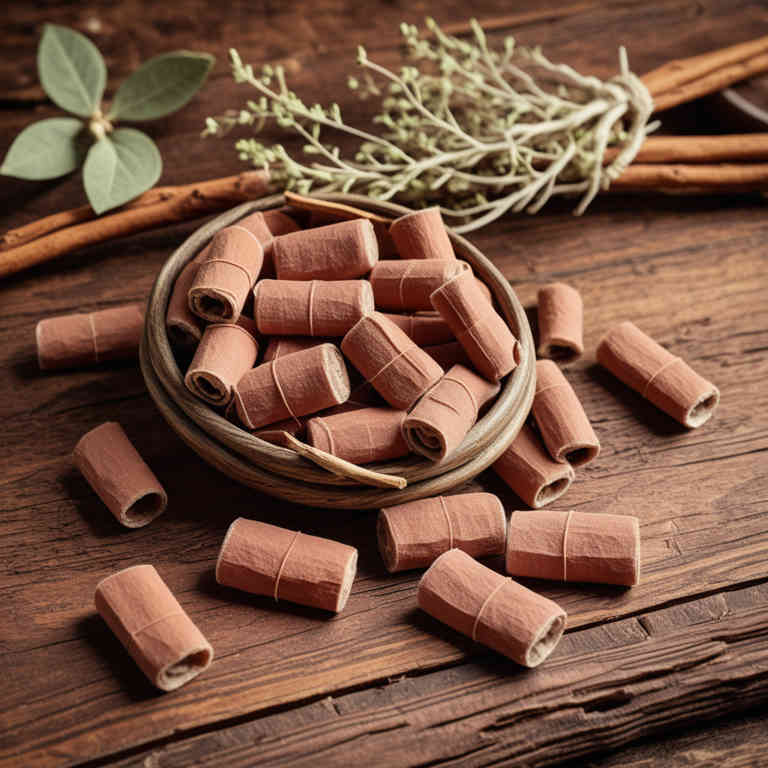Cinchona officinalis lozenge for medicinal use

Cinchona officinalis lozenge is a herbal preparation made from the bark of the Cinchona officinalis tree, which is a source of quinine.
It is traditionally used in herbalism to treat symptoms of malaria due to its antimalarial properties. The lozenge form allows for easy administration and can help soothe sore throats and reduce fever. It is often used in combination with other herbs to enhance its therapeutic effects.
This preparation has a long history in traditional medicine, particularly in South America and Asia.
Uses
Cinchona officinalis lozenge has been used to treat fever and chills associated with malaria for centuries, particularly in South America, where the bark of the cinchona tree was traditionally harvested by indigenous peoples.
Historically, it was also used in traditional medicine to address respiratory conditions such as coughs and sore throats due to its antipyretic and anti-inflammatory properties. In modern times, the lozenge form of Cinchona officinalis is less commonly used for malaria but may still be found in herbal remedies for its soothing effects on the throat. Its active compound, quinine, has also been studied for its potential in treating certain infections and as a bittering agent in pharmaceuticals.
Despite its historical significance, contemporary usage of Cinchona officinalis lozenges is limited, with more potent pharmaceutical alternatives available.
Benefits
Cinchona officinalis lozenge has health benefits such as reducing fever, alleviating symptoms of malaria, and supporting respiratory health.
It contains quinine, a compound known for its antipyretic and antimalarial properties. The lozenge can help soothe sore throats and reduce inflammation in the respiratory tract. It is also used to treat headaches and muscle pains due to its fever-reducing effects.
However, it should be used with caution and under medical supervision due to potential side effects.
Constituents
Cinchona officinalis lozenge active constituents include quinine, alkaloids, and other bioactive compounds such as cinchonine and cinchonidine.
These compounds are known for their antimalarial properties and ability to reduce fever. Quinine, the primary alkaloid, has been traditionally used to treat malaria by interfering with the parasite's ability to metabolize nutrients. Additionally, these constituents may have mild antipyretic and anti-inflammatory effects, supporting their use in respiratory and fever-related conditions.
The lozenge form allows for localized action in the throat, potentially providing relief from soreness and inflammation.
Preparation
To make Cinchona officinalis lozenge, first gather the dried bark of Cinchona officinalis, which is the source of quinine.
Next, grind the bark into a fine powder and mix it with a small amount of honey or a sugar syrup to create a paste. Then, shape the mixture into small lozenges using a mold or by hand, ensuring they are uniform in size. Allow the lozenges to dry in a cool, dark place for several days until they harden.
Finally, store the lozenges in an airtight container to preserve their potency and effectiveness.
Side Effects
Cinchona officinalis lozenge may lead to gastrointestinal discomfort, including nausea, vomiting, and diarrhea, due to its high concentration of quinine.
It can also cause headaches, dizziness, and ringing in the ears, particularly with prolonged use or higher doses. Long-term use may result in hypoglycemia, especially in individuals with diabetes, as quinine can affect blood sugar levels. There is also a risk of developing cinchonism, a condition characterized by tinnitus, visual disturbances, and cardiac arrhythmias.
Due to these potential side effects, it is important to use this preparation under medical supervision.